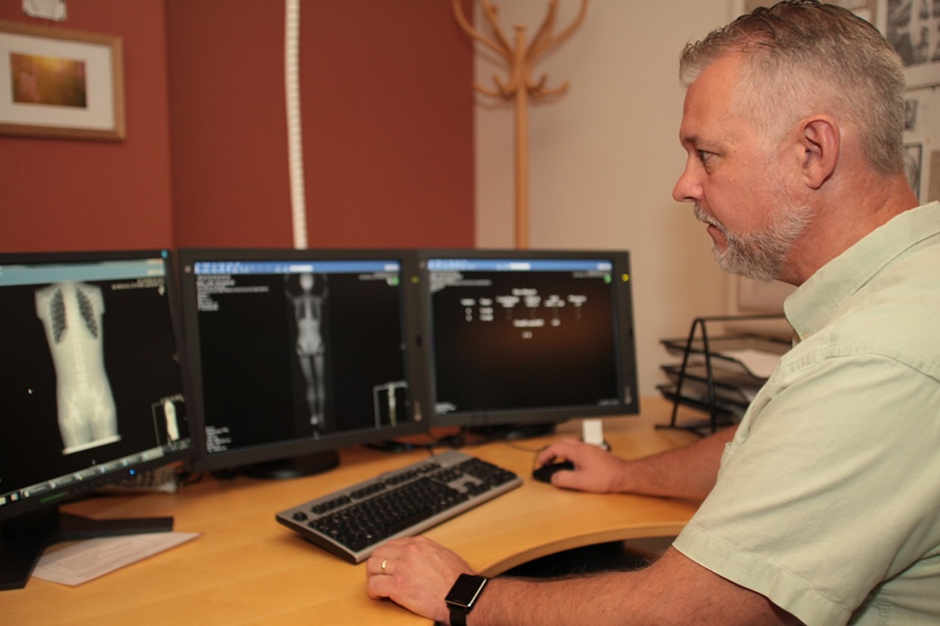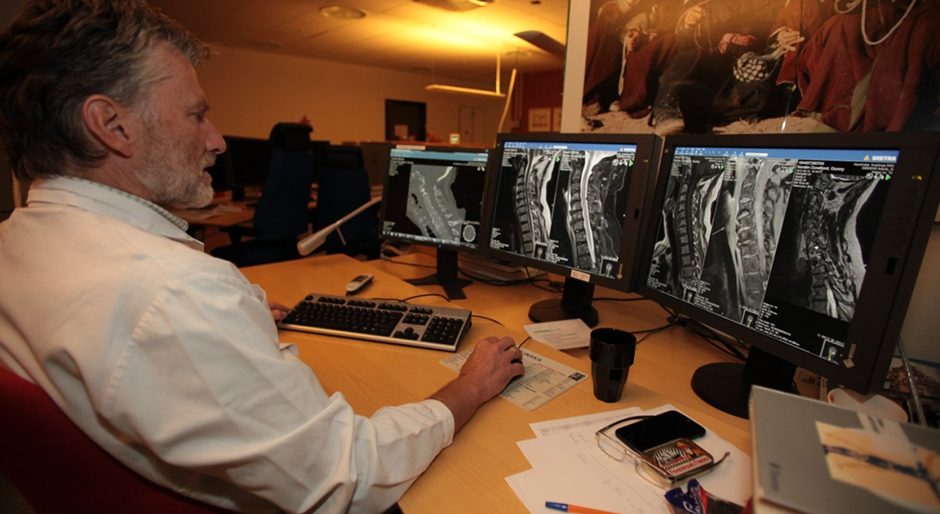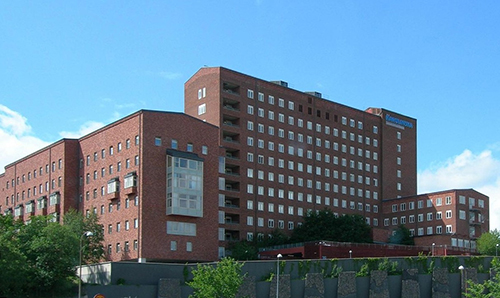Case Study: Karolinska University Hospital
“EIZO monitors need very low maintenance. Since we started to use calibrated EIZO monitors our engineer’s only need to spend two times a year on the monitors. The RadiCS and RadiNET Pro gives us a good overview of the status on all 450 diagnostic monitors connected to RadiNET Pro.”
|
Products Deployed
5 mega-pixel:RadiForce GS510 |
|
|
Karolinska University Hospital is one of the largest university hospitals in Europe. Together with the world-renown Karolinska Institute founded in 1810, they have produced medical breakthroughs such as the Gamma Knife and various catheter techniques by Dr. Sven Seldinger, as well as several ground-breaking procedures with PET. |
| Karolinska University Hospital is the result of a 2004 merger between the former Huddinge University Hospital south of Stockholm, and the Karolinska Hospital north of Stockholm. The new hospital has about 15,000 employees and 1,600 patient beds in specialties such as Astrid Lindgrens Children Hospital, Radiumhemmet Cancer Center, Neurology and Surgery, Thorax, Trauma, Transplantation, Radiology including all specialties such as PET, CT, MR, US, Intervention, and Angio. | |
The facilities of the Karolinska University Hospital Solna are in the process of expanding into a state-of-the-art facility and one of the most environmental friendly university hospitals in the world, this project is called New Karolinska Solna. The hospital will admit its first patients in 2016 and be in full operation in 2018.

Martin Brenning, head of MT X-ray unit
Martin Brenning, head of the MT X-ray unit and with that also responsible for the purchase and quality control for all 450 diagnostic and 400 medical monitors within Karolinska University Hospital says, “EIZO monitors have top quality at an affordable price. We only use calibrated high-quality monitors for diagnostic, so it is extremely important that the monitors are of a high quality level which they are when we use EIZO monitors.
Everything needs to work correctly throughout the whole process, from image acquisition to viewing and diagnose so the monitor which is the last part has to keep a consistency in quality and if the monitor does not keep the high quality level which is needed, we lose the whole process.
EIZO monitors need very low maintenance. Since we started to use calibrated EIZO monitors our engineer’s only need to spend two times a year on the monitors. The RadiCS and RadiNET Pro gives us a good overview of the status on all 450 diagnostic monitors connected to RadiNET Pro.
Our doctors expect the images they review to be of the highest quality and that are what EIZO monitors deliver.”

Klaus Lange, Radiologist





